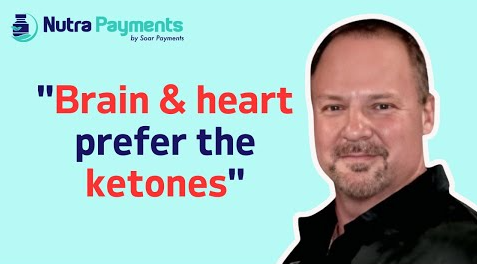Metabolic pathways in the body determine how we utilize the macronutrients (carbohydrates, proteins and fats) we eat, and ultimately what happens to the fuels that come from each macronutrient. It all depends on when the last meal was had, as well as physical activity. If the body is in a "fasting/non-fed" state, energy pathways will behave differently compared to when food is available, or "fed" states.
Let's run through a breakdown of what goes on under the hood, followed by key takeaways at the bottom of the article.
Fed State Rules: Food Is Available
The macronutrients (carbohydrate, fats and protein) you're about to eat are broken down in separate metabolic pathways:
- Carbohydrates are broken down into glucose by enzymes-some burned for immediate energy, which can vary based on activity/type of activity you're performing. Your level of glucose in the bloodstream rises, which triggers an insulin release from your pancreas. This storage hormone shuttles glucose into cells to be made into your body's energy currency (ATP), stores it as glycogen or stored as fat droplets (triglycerides) in fat cells when consumed in abundance (what we want to avoid).
- Fats are digested in your small intestine before being processed into lipoproteins (LDL, HDL) for various functions. Excess fat can be stored as body fat if consumed in abundance (via its own storage of fat droplets in fat cells) just the same as carbs. When fats are used to fuel you as an energy source, they are broken down in the mitochondria (energy batteries of your cells) via a process known as beta-oxidation.
- Proteins are broken down into separate amino acids to be repurposed in cells to form new proteins or to join the amino acid pool-a cache for these molecules. Excesses are converted into bi-products-urea and keto acids via liver enzymes. Urea gets excreted in sweat and urine; keto acids can be used as energy (albeit inefficiently), get converted into glucose (gluconeogenesis), or stored as fat.
Fasted State: Food Isn't Available
All three macronutrients (carbs, protein, fat) are metabolized in their own processes into a common product known as acetyl-CoA. Acetyl-CoA is an important piece in the process which creates our energy currency, ATP (adenosine triphosphate), a molecule produced in those energy batteries, the mitochondria.
The fasting state begins typically 2-4 hours post-prandial (after a meal), but can vary based on what and how much was eaten. This begins once blood glucose drops toward its normal baseline, along with insulin levels. Another hormone, glucagon, is released and triggers the release of glycogen (a stored form of carbs) and fatty acids (stored fats) to fuel the body until the next meal arrives.
This is why it's so important to minimize your eating frequency, especially as an adult. Many 'under the hood' processes occur here, biochemically-speaking, that govern anti-aging, fat loss, muscle growth, hormones, immune function, cognitive ability, and beyond. The perpetual frequent feeding model of eating small meals multiple times per day is dead.
Body is in Starvation Mode
After about 3 days of fasting, stored muscle/liver glycogen is exhausted and insulin levels drop, which gets the body utilizing its stored fat for energy. As fatty acids flow into the blood stream, the liver utilizes excess fats and creates ketone bodies via a process known as ketosis.
The muscles continue to burn fatty acids, but decrease their use of ketones, which makes the ketone bodies build up in the blood stream to a point where the brain uses them for energy. As this goes down, your brain uses less glucose, which sees your liver decrease the rate of gluconeogenesis. This aids in muscle tissue preservation so your body doesn't need to break down amino acids in the tissue to convert them to glucose.
Because of ketosis, the human body can survive for extended periods without any eating.
Ketogenic Diets, Intermittent Fasting Mimic The Metabolic Pathway of Starvation Without The Hunger
The modern keto diet was originally invented in a medical setting as a fasting-mimicking diet. The lack of carbs/glucose mimic the starvation metabolic pathway in the body in the sense that your liver produces more ketones since less glucose is available.
Because protein intake should stay at a moderate/moderately-high amount to mitigate muscle loss, you'll maintain lean body mass while losing fat.
The markers for disease improve across the board if you're opting for quality sources of food in addition to following the diet ratio protocol.
What To Take From This Information
- Eat for exercise demands: You can have more carbs if you're doing more activities that use them (strength training, combat sports, fast twitch athletics, etc.) You can have more fat if you're doing more activities that use them (endurance sports, walking, hiking, yoga, surfing, etc.).
- You don't have to be on a strict keto diet-you just need to experience states of ketosis. Think of it as a spectrum more than an absolute number/goal. Days of rest, low-level activity, endurance training, etc. should look more like keto ratio diet days for most people.
- You should eat less often if you're an adult. Stop the grazing and snacking. Consolidate your eating into 2-3 meals/day by which you fit your entire days' worth of food into these sittings to maximize the benefits of being in a non-fed state.
- Consider intermittent fasting if you're not overly stressed and/or don't have a ton of hormonal complications. Pick a 6-8 hour window of time (men) or a 10-12 hour window of time (women) to fast daily to plunge yourself deeper into a state of ketosis, which also allows you to eat more carbs/less fat to accomplish the benefits of ketosis for more diet flexibility/long-term adherence. Many women respond better to fasting in lighter doses of 1-2x/month to 1-2x/week. If you're fasting less often, consider shortening your eating window even further than the proposed time so as to maximize this small dose fasting.
- Overconsuming anything can result in fat storage, regardless of diet ratio. You can't outsmart the laws of thermodynamics. If you eat too much for too long, you'll gain fat.
- Whether you're trying to add or lose lean body mass, you need to calorie cycle. This means having days where you both restrict calories and have calories in abundance. This will enable you to experience the benefits of the fasted/starvation state if you're trying to add lean mass. Conversely, if you're trying to get leaner, this will help preserve muscle mass. Time the surpluses for when you're strength training and the deficits for when you're resting or performing cardiovascular/conditioning exercise.

 ACCOUNT
ACCOUNT
 CART
CART





